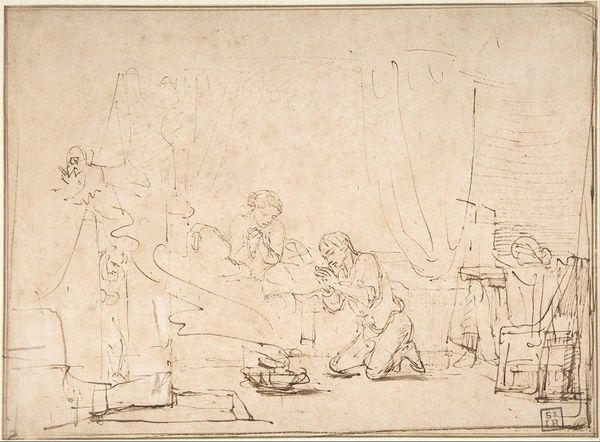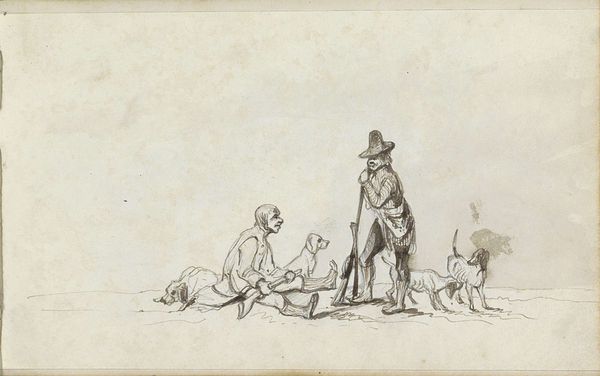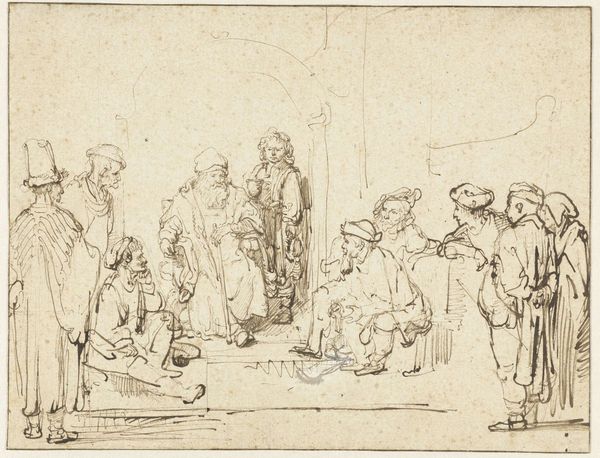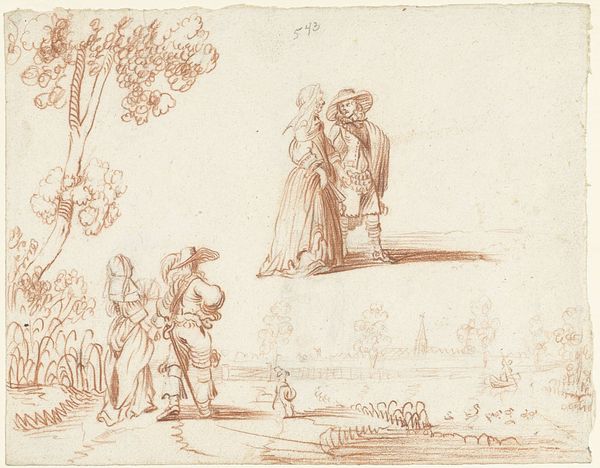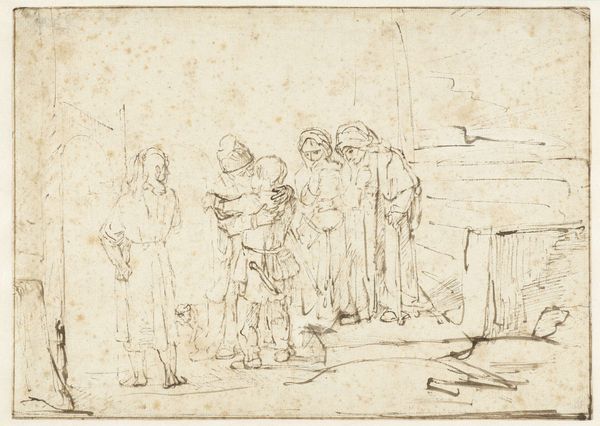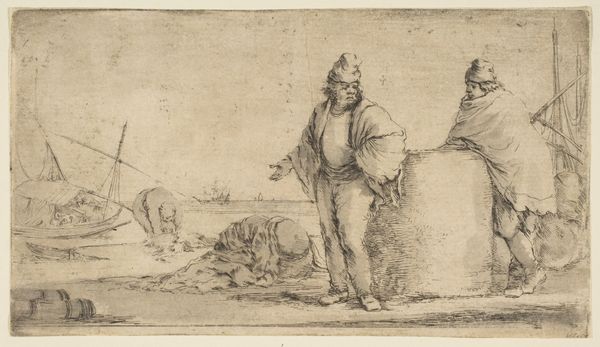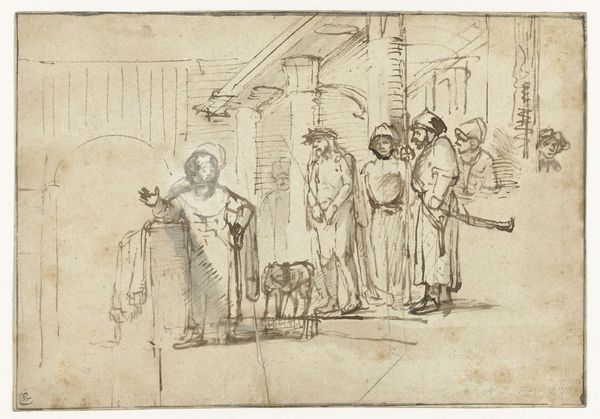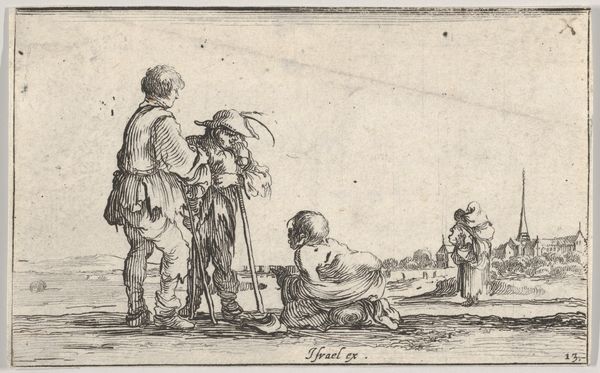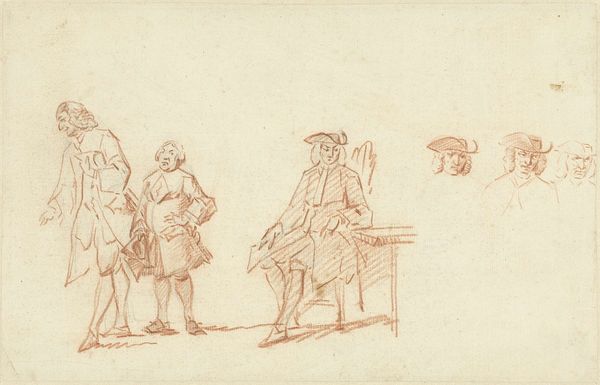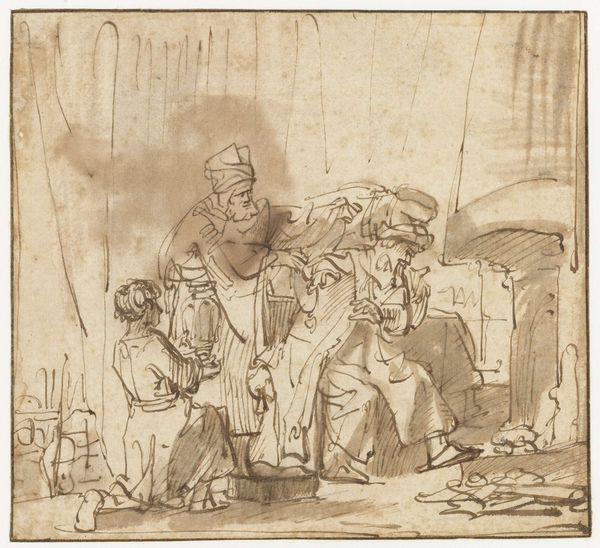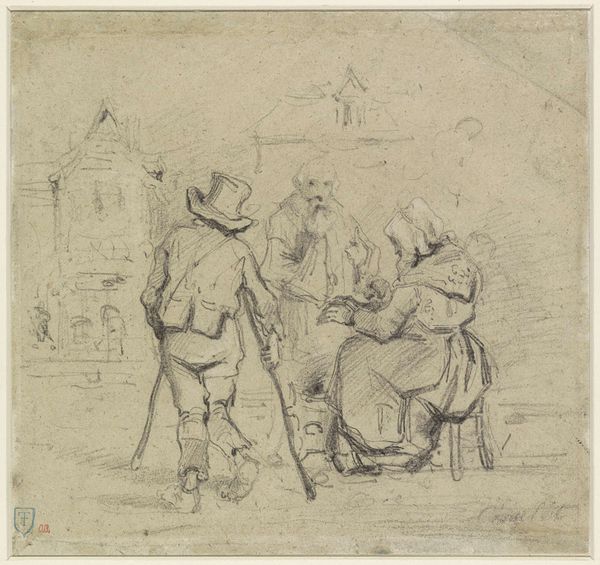
drawing, paper, ink
#
drawing
#
narrative-art
#
baroque
#
figuration
#
paper
#
ink
#
history-painting
Dimensions: height 195 mm, width 293 mm
Copyright: Rijks Museum: Open Domain
Editor: Here we have Rembrandt van Rijn's "David Receiving the News of Uriah’s Death," created around 1650. It’s an ink drawing on paper. The stark simplicity of the lines really strikes me – it feels so immediate and raw. What do you see in this piece? Curator: I see a potent depiction of power, gender, and accountability. Think about David’s position. As king, he abused his authority, leading to Uriah’s death to cover up his own affair with Bathsheba. Rembrandt, here, captures the moment when David’s actions catch up with him, highlighting the intersections of power, morality, and gendered violence. Does David appear remorseful? Editor: Not really. He seems more…stately than sorry, detached even. It’s the messenger who seems burdened. Curator: Precisely! This detachment is key. David’s regal bearing, even in this moment of revelation, underscores how power can insulate individuals from the consequences of their actions. Consider the power dynamics inherent in the narrative. David’s treatment of Bathsheba, his manipulation of Uriah – these are all acts enabled by his position. How does Rembrandt’s choice of medium, the quick strokes of ink on paper, reflect this? Editor: It lends a sense of urgency, a lack of polish. It’s like a glimpse behind the carefully constructed facade of royalty. Almost a snapshot. Curator: Yes! It resists idealization, offering a critical lens onto this biblical tale. We are confronted with the uncomfortable truth of how easily power can be corrupted and used to perpetuate harm, specifically towards a woman in his court and a loyal soldier. It invites us to examine similar dynamics in our contemporary world. Editor: I see the connection. So, Rembrandt isn't just illustrating a bible story; he's critiquing the abuse of power? Curator: Exactly! And in doing so, prompting us to consider how these systems of power continue to shape our social and political landscapes. This piece highlights the continued struggle to hold those in power accountable for their actions. Editor: That's powerful. I'll never look at a Rembrandt the same way again.
Comments
rijksmuseum about 2 years ago
⋮
Rembrandt portrayed various events in the life of the Old Testament figure of King David. This drawing shows an episode that hardly ever appeared in art: the moment David hears of Uriah’s death in the battlefield. He had arranged that it would happen, after he had seduced Uriah’s wife, Bathsheba, and she had conceived his child. God then sent the prophet Nathan (right) to admonish David.
Join the conversation
Join millions of artists and users on Artera today and experience the ultimate creative platform.
